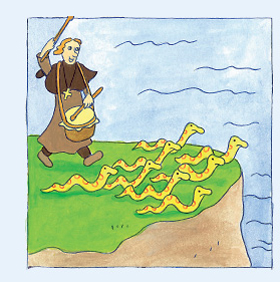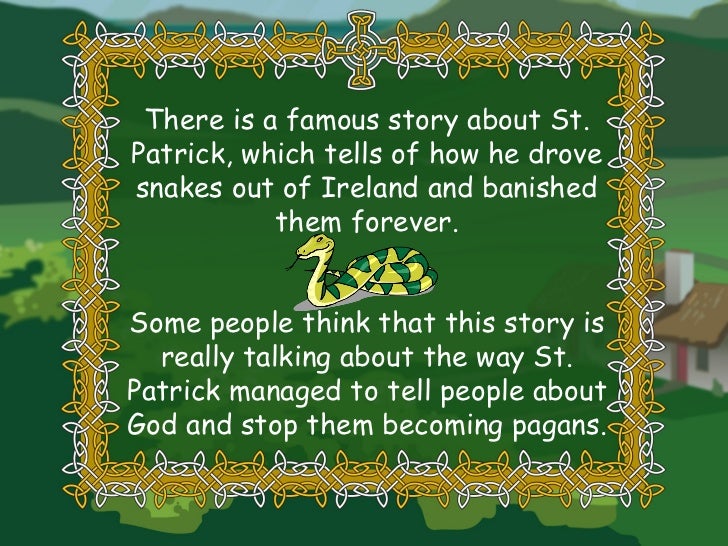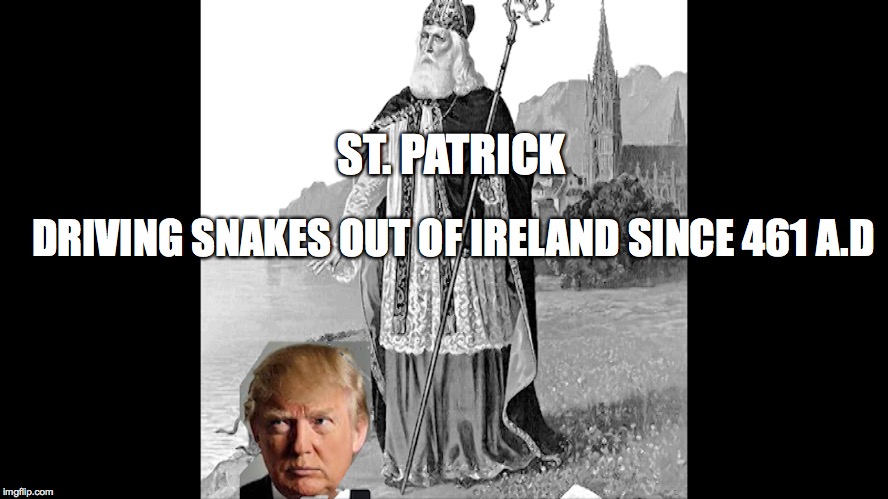The first St. Patrick's Day Parade actually took place in Boston, Massachusetts, back in 1737; the city is known for its high percentage of residents who claim an Irish ancestry. However, some modern Pagans refuse to observe a day which honors the elimination of an old religion in favor of a new one. Ask any Irish child, and they’ll tell you the story with absolute certainty: St. Patrick drove the snakes out of Ireland. It’s a tale etched in the consciousness of a nation—a tale passed down in whispers beside hearths, etched in stained glass, and echoed in classrooms. But what if the story isn’t about serpents slithering The Best Irish Songs And The Best Irish Films Of All Time For Paddy’s Day; 8 Ways That We Celebrate St. Patrick’s Day In Ireland; The Most Notable St. Patrick’s Day Traditions In Ireland; 17 Tasty St. Patrick’s Day Cocktails To Whip Up At Home; How To Say Happy St. Patrick’s Day In Irish; 5 St. Patrick’s Day Prayers And Blessings The Myth of St. Patrick and the Snakes The Legend. The story goes that St. Patrick, while fasting atop a hill, was besieged by snakes. Enraged and empowered by his faith, he drove them all into the ocean, thus ridding Ireland of the slithering creatures. This narrative has become a central part of the St. Patrick’s Day celebrations and the St. Patrick’s Day has changed substantially over the years since its founding in the 1600s. Stemming from traditions heavily rooted in religion, St. Patrick’s Day originated on March 17th to celebrate St. Patrick, the Patron Saint of Ireland and Engineers, who was renowned for spreading Christianity throughout Ireland and whose legend has become deeply intertwined [] Most know that the shamrock symbol comes from the story that St Patrick used the plant's leaves to explain the Holy Trinity to the pagan Irish. So what is his association with snakes? Read more: Irish words and phrases to teach your kids before St. Patrick's Day. Legend has it that he rid the reptiles from Ireland. St. Patrick's Day, which is celebrated worldwide on March 17, honors St. Patrick, the Christian missionary who supposedly rid Ireland of snakes during the fifth century A.D.. According to legend The legend of St. Patrick ridding Ireland of snakes in the 5th century is a fascinating tale enticing both foreigners and residents. During an attempt to fast for 40 days, the saint was attacked by a group of snakes. Saint Patrick traveled across Ireland preaching and teaching about Christianity. Everywhere he went, however, the people whispered in fear. The fields and forests were full of evil creatures slithering along the ground. Even speaking of these snakes made the people tremble in fear. One day, Saint Patrick climbed a hill overlooking the sea. He The shamrock legend came along centuries after Patrick’s death, as did the miraculous battles against the druids. And forget about the story about him driving out the snakes – Ireland never had any to begin with. The real story of St Patrick is much more interesting than the myths. What we know of Patrick’s life comes only through the Green Chicago River on Saint Patricks Day 2009 – Mike Boehmer from Chicago, IL, USA, CC BY 2.0, via Wikimedia Commons The Lasting Legacy of Saint Patrick. Saint Patrick’s mission to Ireland had a profound and lasting impact on the spread of Christianity across the island. He is a deeply symbolic figure who has resonated through time as a religious legend who banished all the snakes from Ireland, as a true national treasure and as an ultimately patriotic symbol that is equally as significant as the colour green and the shamrock that is so associated with St Patrick’s day on March 17th. St. Patrick’s Feast Day St. Patrick’s Day, celebrated on March 17 each year, is known for its parades, shamrocks, and a whole lot of green. It’s a day when people around the world embrace Irish culture — whether they have Irish heritage or not. But behind all the revelry, St. Patrick’s Day has a deep and fascinating history that goes far beyond the modern celebrations. Some of the traditions we associate with However, as captivating as this story may be, it’s essential to delve deeper into history and science to unravel the myth surrounding St. Patrick and snakes. The legend goes that during a 40-day fast on top of a hill, St. Patrick was attacked by snakes. In response, he chased all of them into the sea, freeing Ireland from these slithering St. Patrick’s Day is a global celebration of Irish culture that takes place annually on March 17, the anniversary of the patron saint of Ireland's death in the fifth century. The holiday has Many of the stories traditionally associated with St. Patrick, including the famous account of his banishing all the snakes from Ireland, St. Patrick’s Day is a holiday known for parades However, Patrick found a method that would eventually succeed, enabling him to convert the Irish without either sword or army. As well as working to build alliances with local leaders, he popularized the faith by harnessing the knowledge he had gained of the native language, culture and religion during his time in slavery, and using this to merge Irish lore and celebrations with Christianity. You can learn more about St. Patrick’s story in his book, Confessio (also titled The Confession of St. Patrick) Legends & Myths. There is a legend that there are no snakes in Ireland because St. Patrick drove them all into the ocean by beating a drum. Another legend talks about St. Patrick teaching about the holy trinity by using a clover. St. Patrick and the Snakes, A Story Worth Reading on GatherTales
Articles and news, personal stories, interviews with experts.
Photos from events, contest for the best costume, videos from master classes.
 |  |
 |  |
 | |
 |  |
 |  |
 |  |